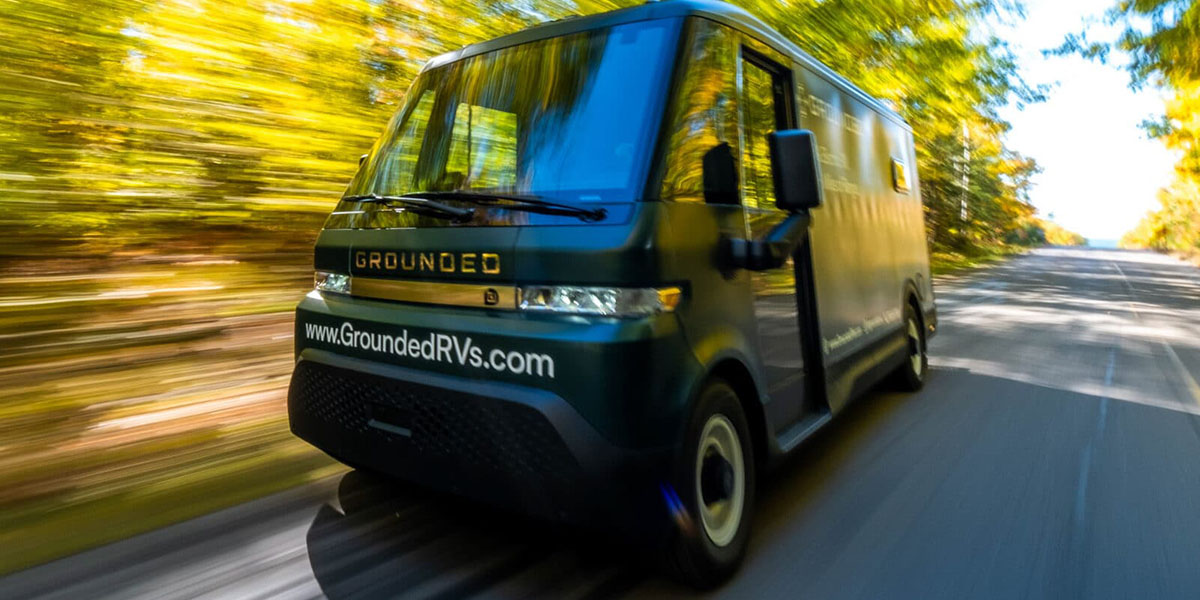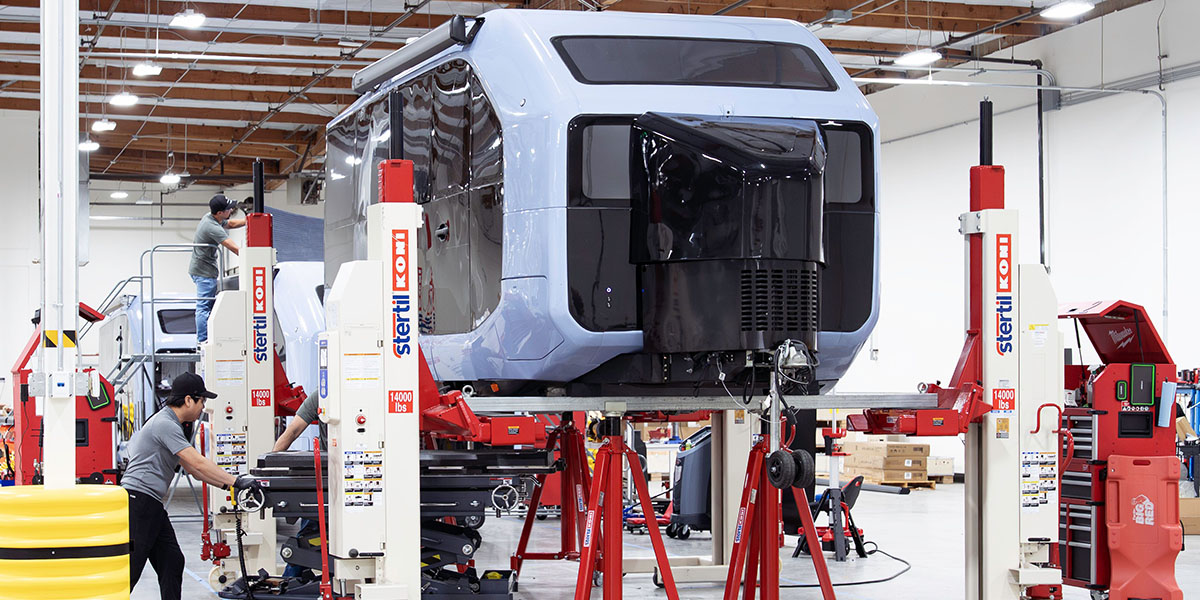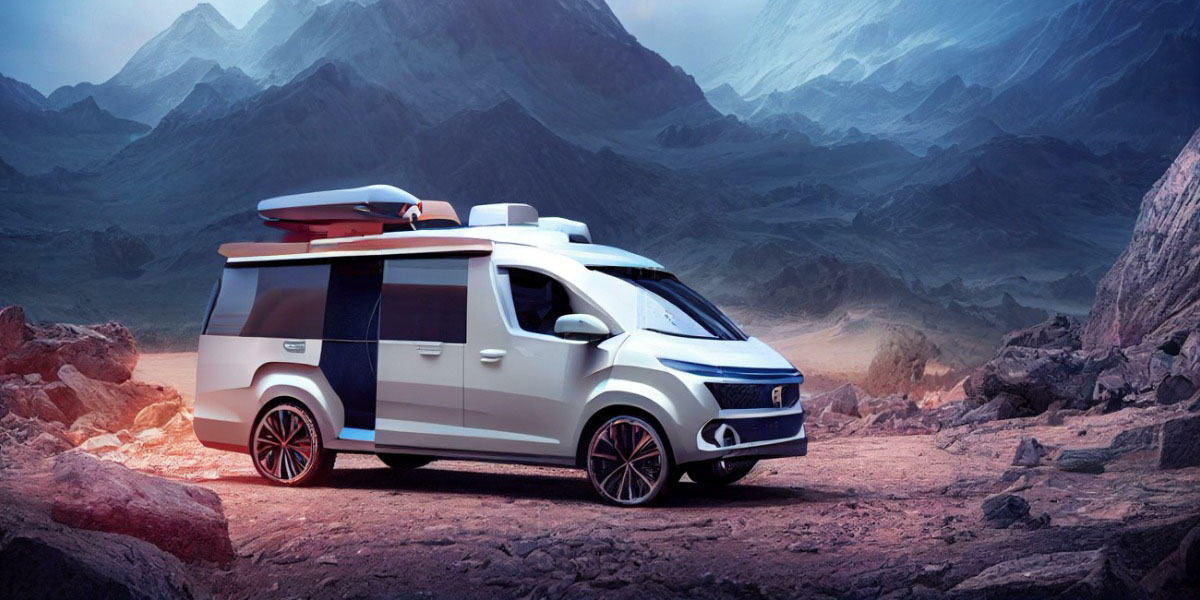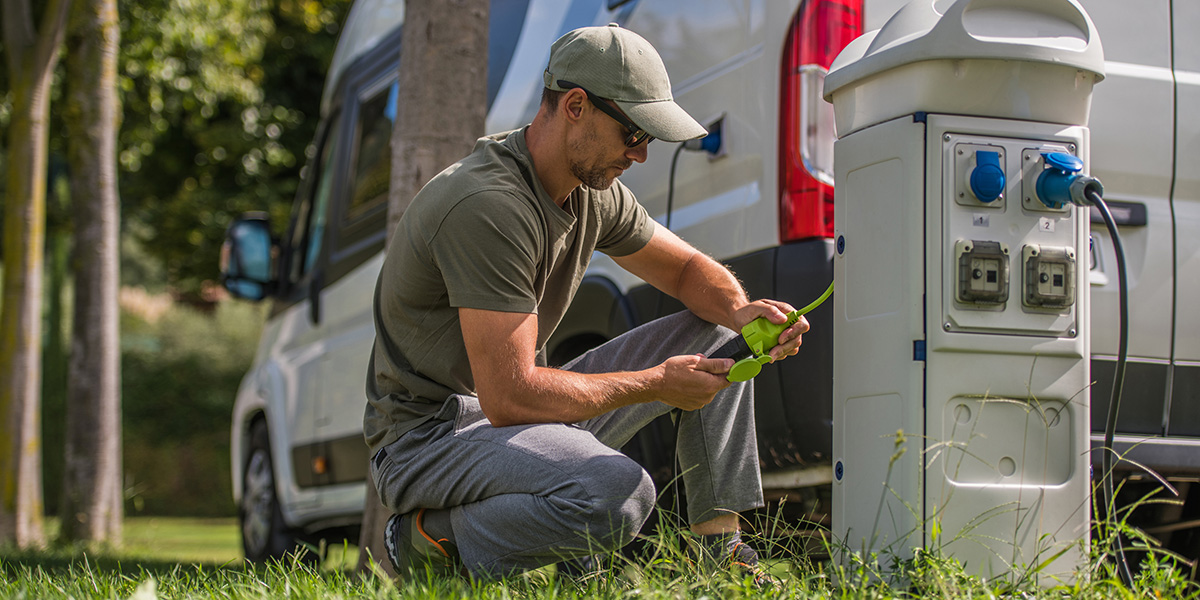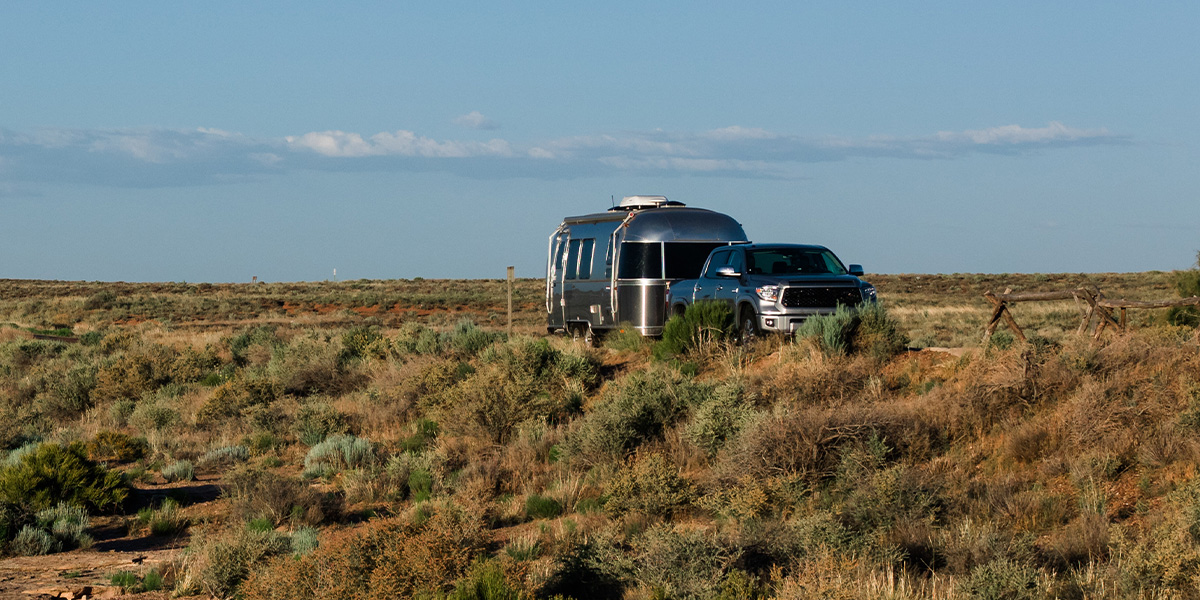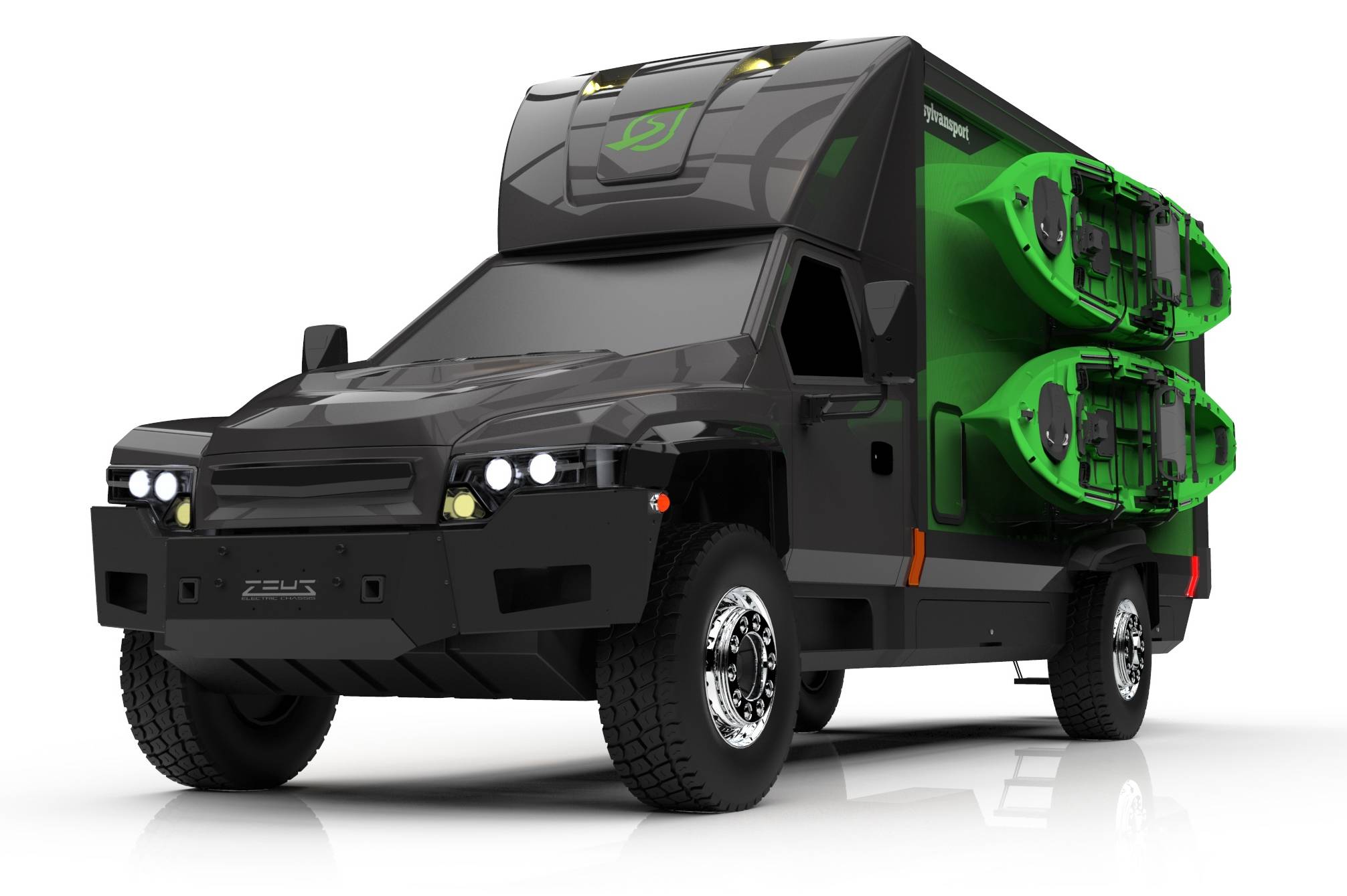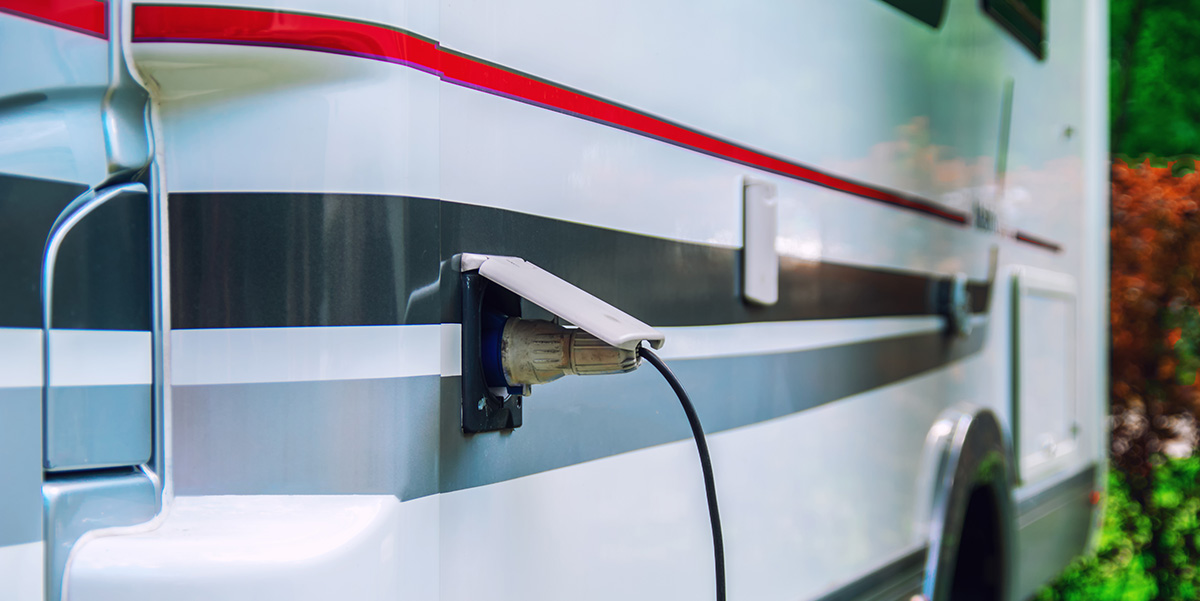While EV sales have declined, electric RVs are slowly marching forward, with two manufacturers making the news in recent weeks. Harbinger Motors, based in Garden Grove, California, has begun production of their electric commercial truck chassis, which was the basis of Thor’s plug-in hybrid Class A prototype that was demonstrated at the 2024 Elkhart Dealer Open House.
Conversely, GM has temporarily paused production of its Brightdrop electric delivery van. The Brightdrop has found favor with a few boutique RV makers who convert the vans to RVs. But sales are sluggish, with GM reporting only 274 units sold in total in the first quarter of 2025.
Thor Prototype Previews Future Electric RVs
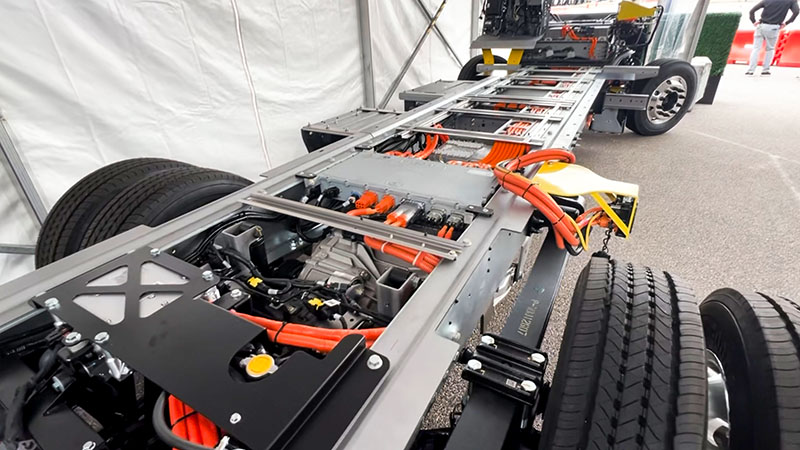
At its open house last year Thor Motor Coach had a prototype motorhome based on the Harbinger chassis on a test track for journalists and RV dealers to try out. The vehicle itself looked very much like other Thor motorhomes, which are based on a Ford truck chassis. Other than a very unusual paint job, the Thor prototype resembled a Thor A.C.E. and was about the same size.
To address the range anxiety commonly associated with EVs, an on-board gasoline engine extends the estimated range of the vehicle from 150 miles with a fully-charged battery alone to up to 500 miles. The ample battery capacity means equipment like kitchen appliances, the air conditioner, and such can all be run from the battery, without relying on a generator, similar to the Pebble Flow.
My experience driving the prototype reminded me of the difference between driving an electric car and a gas-powered one. The motorhome offered reasonable acceleration and good overall performance; the handling was notable for being able to maneuver in the tight test course and navigate very tight turns – much tighter than one might expect a vehicle of this size to be able to handle.
GM BrightDrop RV Sales Sluggish Despite Promise
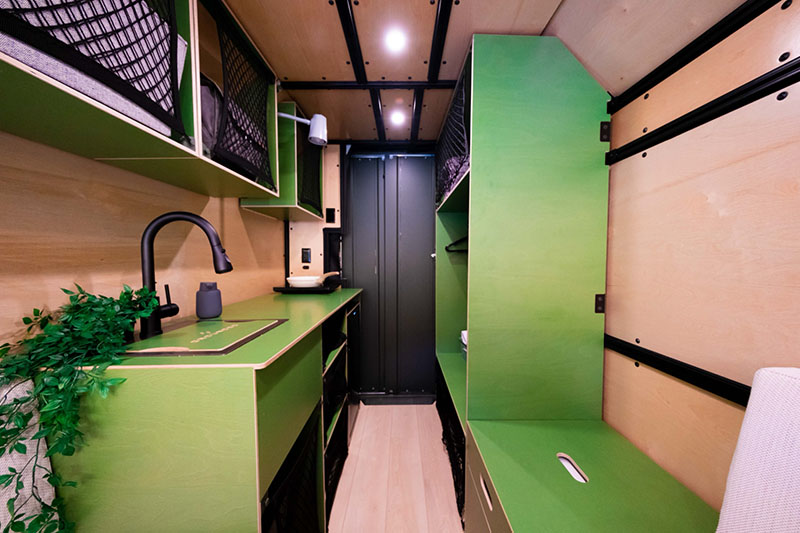
GM’s BrightDrop commercial van has had trouble finding traction with customers thus far, but there is at least one RV company that’s seen its potential for camper van conversions. RV maker Grounded bases their Zevo motorhome on the BrightDrop, promising 270 miles of range. Part of the RV upfit includes adding 1,000 watts of solar and adding an rail-based modular system to the interior that allows customers to fit and retrofit components like a shower, seating, or storage according to their present needs.
Electric vehicles face a perennial chicken-and-egg problem between sales volumes and infrastructure: Drivers of EVs often report problems with a lack of charging stations – or ones that are out of service; on the other hand, there isn’t a big enough customer base to justify building out a more robust charging network, their operators claim. Though the benefits to RVing are obvious: quieter operation, less air pollution at campgrounds, extended off-grid autonomy, with the drastic ebb and flow of funding and public faith, the future of electric motoring is uncertain, but not without promise.
